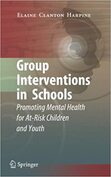
A teacher recently asked me, “How am I supposed to set up a hands-on learning environment in a classroom with 26 students who read at different levels and have widely differing skill sets? I've read where you talk about creating a hands-on learning environment at your reading clinic. That's great, but I can't set up an entire reading clinic in my classroom. I have other subjects to teach besides just reading.”
Yes, it is true, with my Camp Sharigan week-long program, I create an imaginary summer camp that fills the entire room—wall hangings, mountains, fishing ponds, a paper poison ivy vine, and even a snake pit with fuzzy snakes.
And yes, at my reading clinic, students have moved up as much as four grade levels in reading in one year—our program is actually only eight months long, September to May. I use hands-on learning and creative-art therapy with group-centered prevention to help students replace failure with success.
 A learning center in the classroom can be as simple as a follow-the-directions project. Give a sheet of step-by-step directions. Then, lay out examples for the children to follow. Next, tie in the hands-on project with what you are teaching in class.
A learning center in the classroom can be as simple as a follow-the-directions project. Give a sheet of step-by-step directions. Then, lay out examples for the children to follow. Next, tie in the hands-on project with what you are teaching in class. Before we go further, let's define our terms so that we can make sure we are all talking about the same thing. Hands-on learning is often described as “learning by doing” or “sensory learning.” Hands-on learning is when a student gains knowledge or skills through their actions rather than just sitting and listening to someone talk.
As a psychologist, I add a bit of therapy by using group-centered prevention and creative art therapy techniques. This becomes important for my work because I work with students who have failed in reading or who are struggling to learn to read. Therefore, I need to erase the psychological damage and rebuild. A negative learning experience can become a life changing event and such change is not always for the better.
I believe whenever you have learning loss, you have the potential for psychological damage or harm; therefore, I rebuild self-efficacy (the students’ belief that they can succeed and learn to read) into all of my programs.
An upcoming post in this series shows an actual hands-on learning project, complete with pictures and a pattern, so you can see how hands-on learning can help a student master a lesson.
____________
For more about hands-on learning, read: Teaching Technique #8, Hands-on Learning
____________


 RSS Feed
RSS Feed
